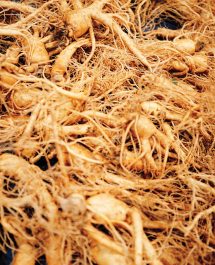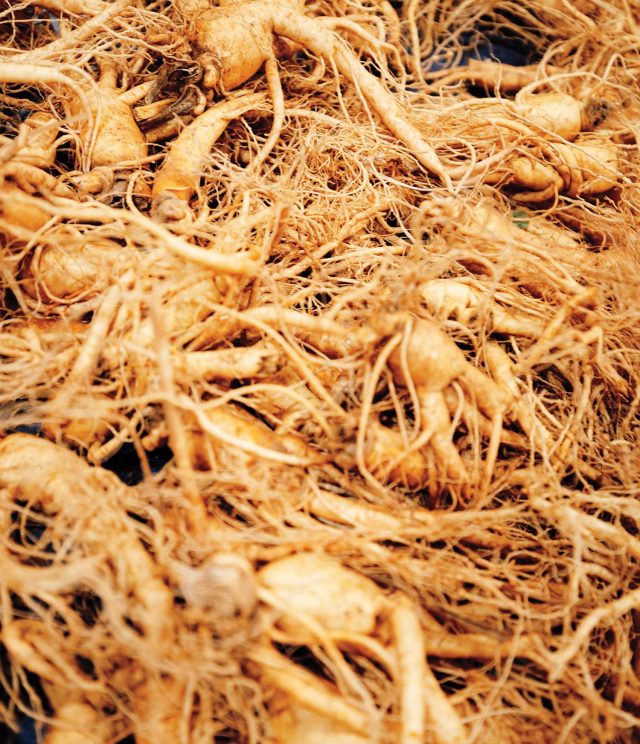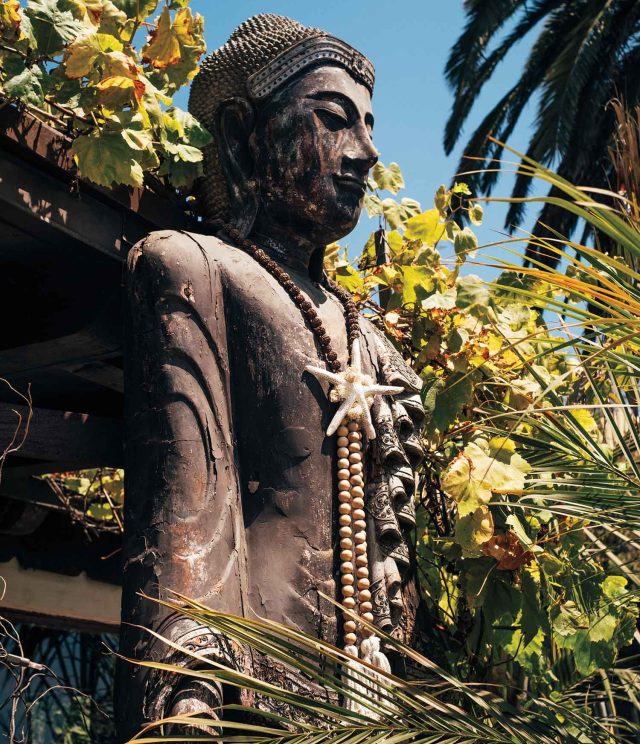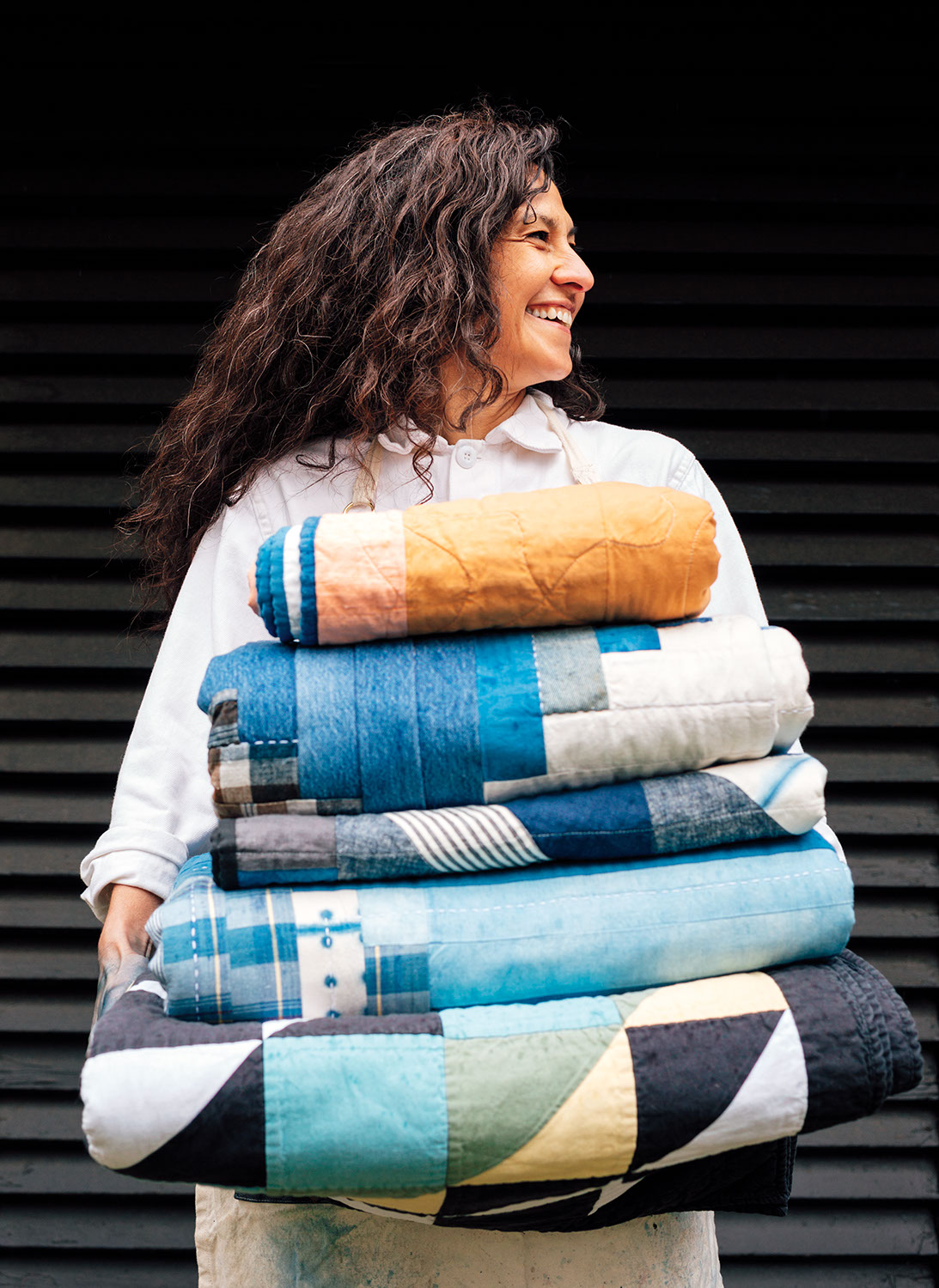
STORY BY SHELBY DEERING ✷ PHOTOGRAPHS BY JONAS JUNGBLUT
A kaleidoscope of shocking pink, deep-sea blue, and sunny yellow swirl and whirl in buckets—hues that lead to happily stained hands and, eventually, a bevy of home goods that includes clothing, quilts, and furniture. This is Adriana Moreno’s world.
As the founder of Moonshadow Goods, the Portland, Oregon freelance apparel designer splices her day job with creating small batches of naturally-dyed pieces for apparel and homeware brands alike, such as Jungmaven, Rejuvenation, Ace & Jig, Double R Design, and Lord Interior Design. Adriana feels that something about her work catches the eye of the companies, or their design values and aesthetics align. “They reach out because they’ve seen my work either on Instagram or by word of mouth,” she says. “Most of the collaborations happen very organically. I’m not forcing things to happen. If the stars align and it works out, then that’s cool. And if it doesn’t, that’s cool, too.”
Adriana’s laid-back vibe is as down-to-earth as the materials she uses to make her dyes. Adhering to using natural dyestuffs and striving to only work with plants that are in season, she gathers local ingredients—really local. “I’ve been able to grow my own dye garden in my backyard,” she says, growing everything from indigo to marigolds to dahlias.
“I also like to partner and support local farms by harvesting from them. I’ve gathered walnut hulls from neighborhood trees, never taking more than I need, as other critters depend on these resources as well. I’ve had family and friends store their avocado pits and skins for me.”

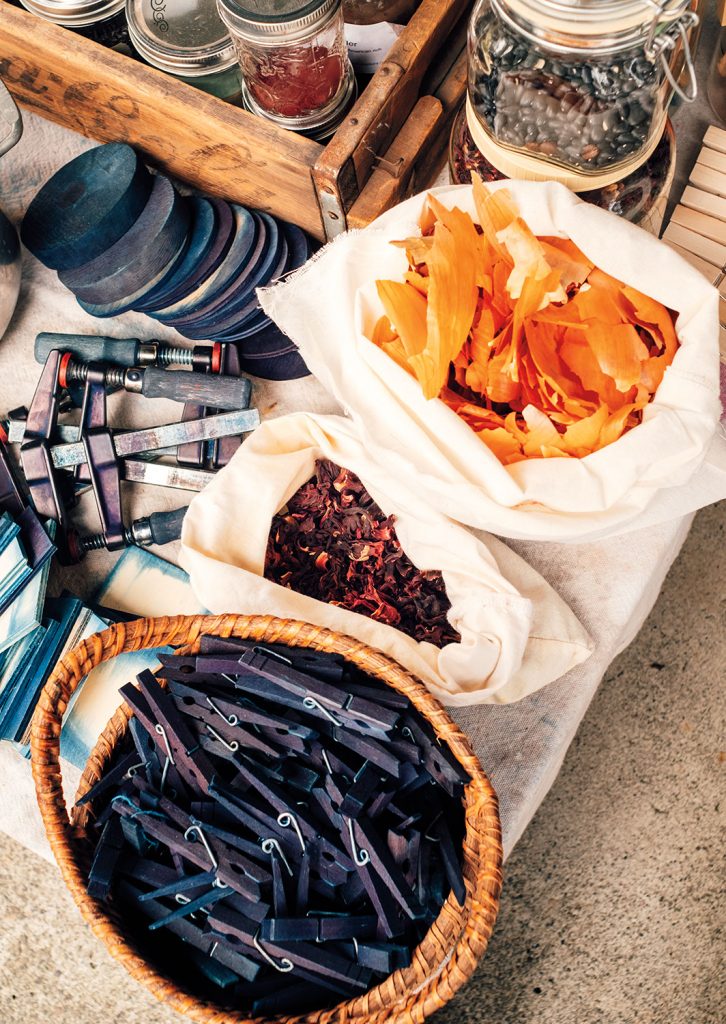
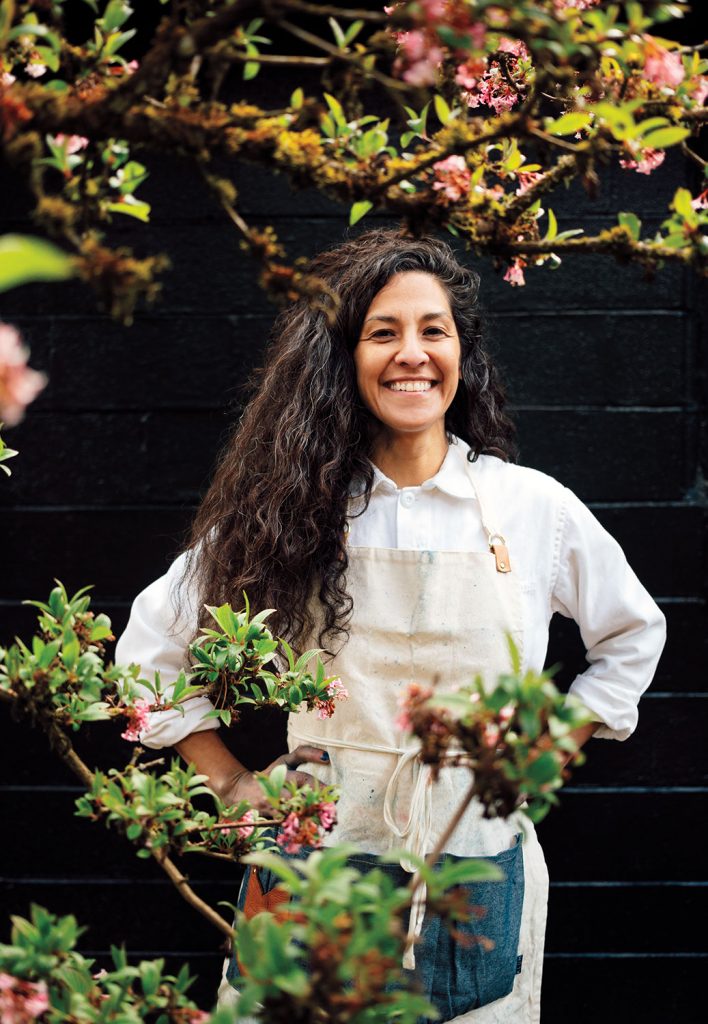
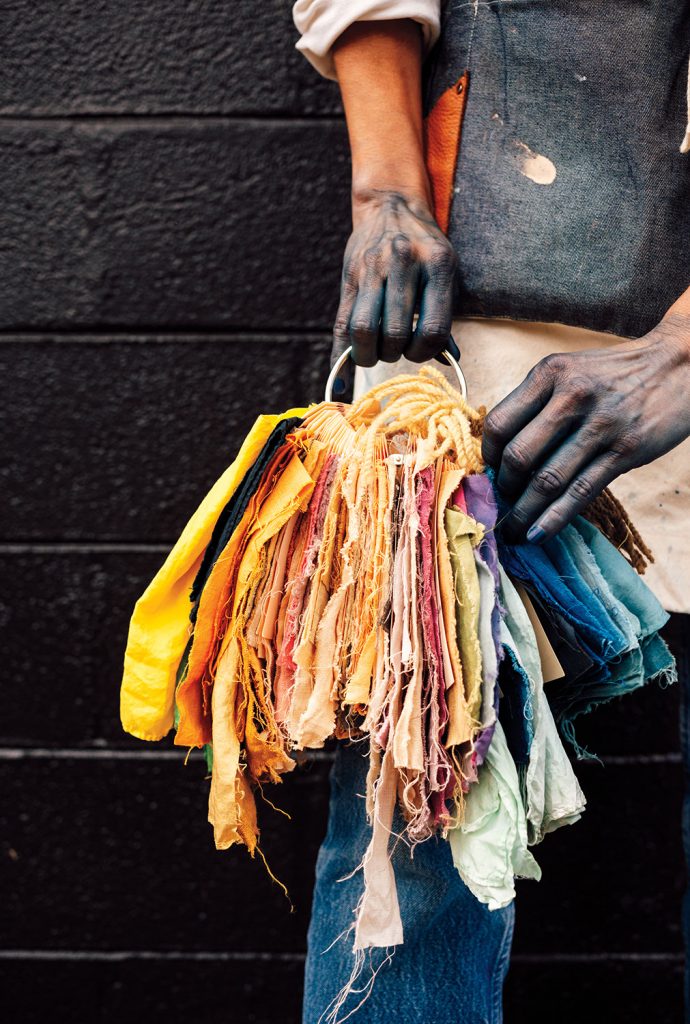
Her enthusiasm for natural dyes comes first from her appreciation of the environment (which she refers to as a “love and deep respect for the natural world”) and her no-waste philosophy. Her focus on minimizing waste in her work and daily life was sparked further when she visited an exhibit at the Portland Japanese Garden. Called “Mottainai: The Fabric of Life, Lessons in Frugality from Traditional Japan,” the humble, yet exquisite, garments on display represented the Japanese art of not being wasteful, and it resonated with Adriana.
It also harkened back to her childhood. “Growing up in my Mexican household, we could not afford to waste anything,” she says. “The majority of my clothes were hand-me-downs from my older sister or cousins. We bought secondhand—and I still do today.”
Simply put, Adriana finds beauty in the things people tend to toss. For instance, the strings used to tie up fabric bundles live out a second life as hang tags. Drop cloths make perfect quilt backings, which she says, “are so lovely with all the natural dye spatters.”
Adriana believes that natural dyes are better than synthetic dyes. She loves the fact that the slight variations in color from dye bath to dye bath adds to the bespoke quality of each piece. And she stresses the importance of education on this topic. “There are lots of articles about the toxicity of synthetic dyes,” she says. “It’s so complex, and I encourage people to do their own research.”
She also warns that when it comes to dyes, “natural” doesn’t necessarily always mean safe. All of the natural dyes she works with are nontoxic, but some people might have allergies or sensitivities to certain plants. “Choose your plants wisely,” Adriana advises. “Always properly identify the plants you are working with before experimenting. Folks just need to do their own research on what plants to use.”
With her laid-back, humble approach, it’s clear that Adriana’s creative process is just as natural and unpretentious as the very ingredients she uses. Frequently experimenting and trying new techniques, Adriana continues to believe that she’s not an expert—even though she’s had nearly a decade of natural dyeing experience.
Looking out toward a future brimming with organic, vibrant colors, she says, “I’m still learning so much and the possibilities are endless.”
As the founder of Moonshadow Goods, the Portland, Oregon freelance apparel designer splices her day job with creating small batches of naturally-dyed pieces for apparel and homeware brands alike, such as Jungmaven, Rejuvenation, Ace & Jig, Double R Design, and Lord Interior Design. Adriana feels that something about her work catches the eye of the companies, or their design values and aesthetics align. “They reach out because they’ve seen my work either on Instagram or by word of mouth,” she says. “Most of the collaborations happen very organically. I’m not forcing things to happen. If the stars align and it works out, then that’s cool. And if it doesn’t, that’s cool, too.”
Adriana’s laid-back vibe is as down-to-earth as the materials she uses to make her dyes. Adhering to using natural dyestuffs and striving to only work with plants that are in season, she gathers local ingredients—really local. “I’ve been able to grow my own dye garden in my backyard,” she says, growing everything from indigo to marigolds to dahlias.
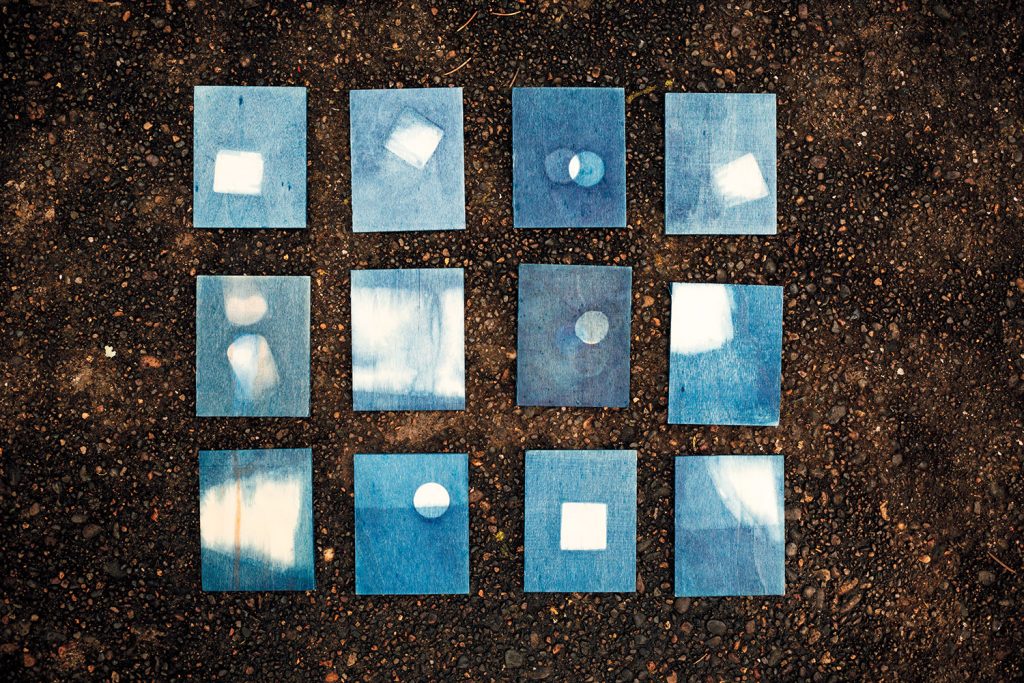
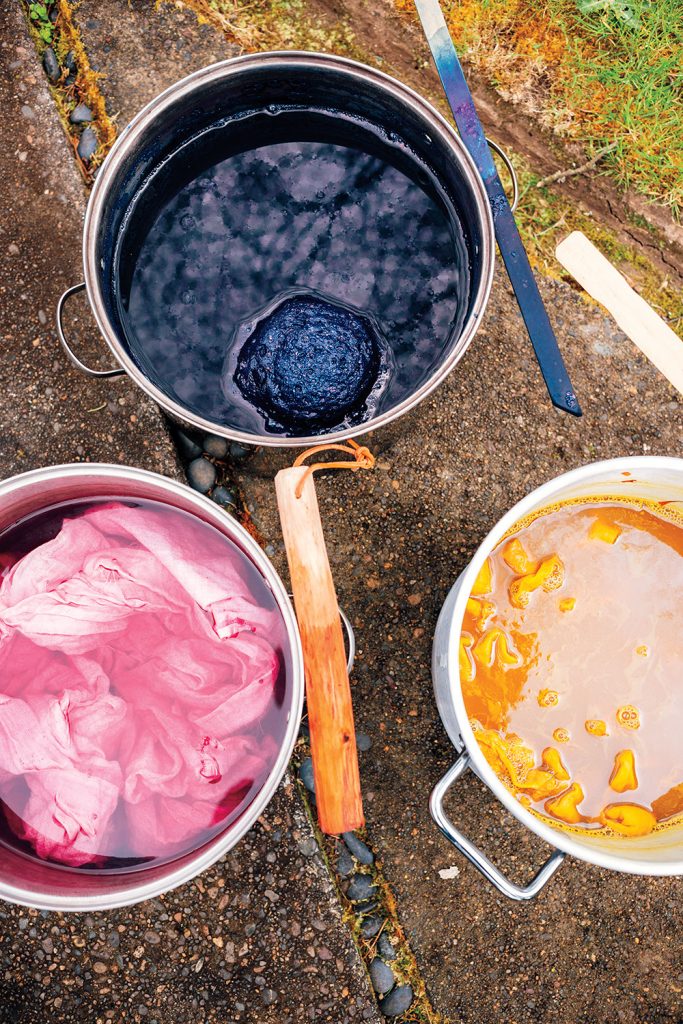
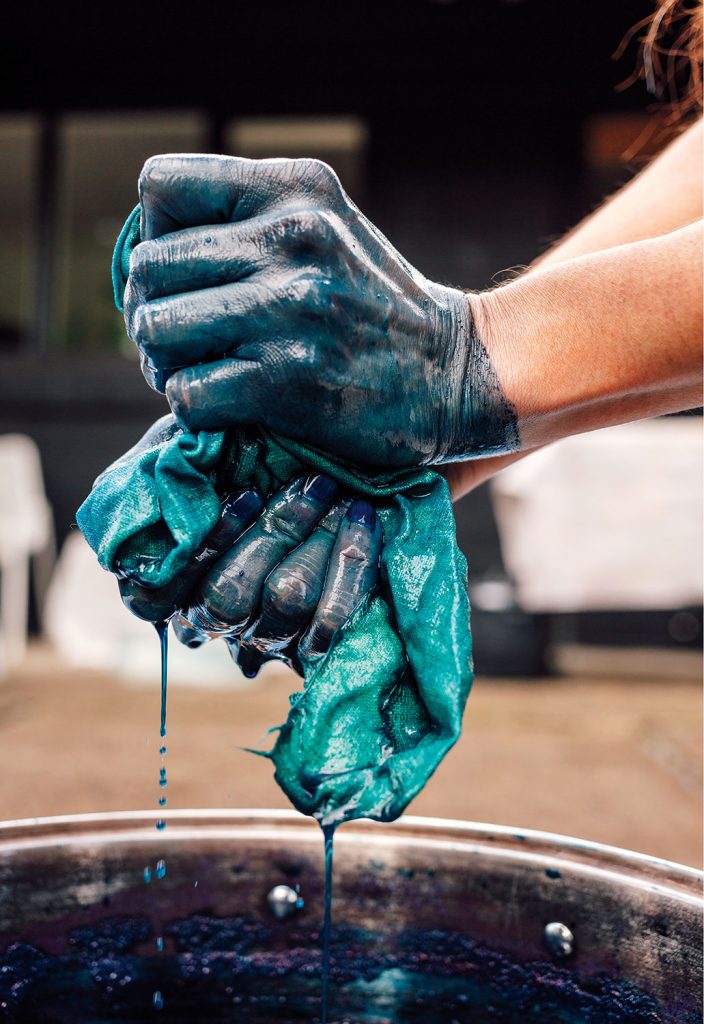
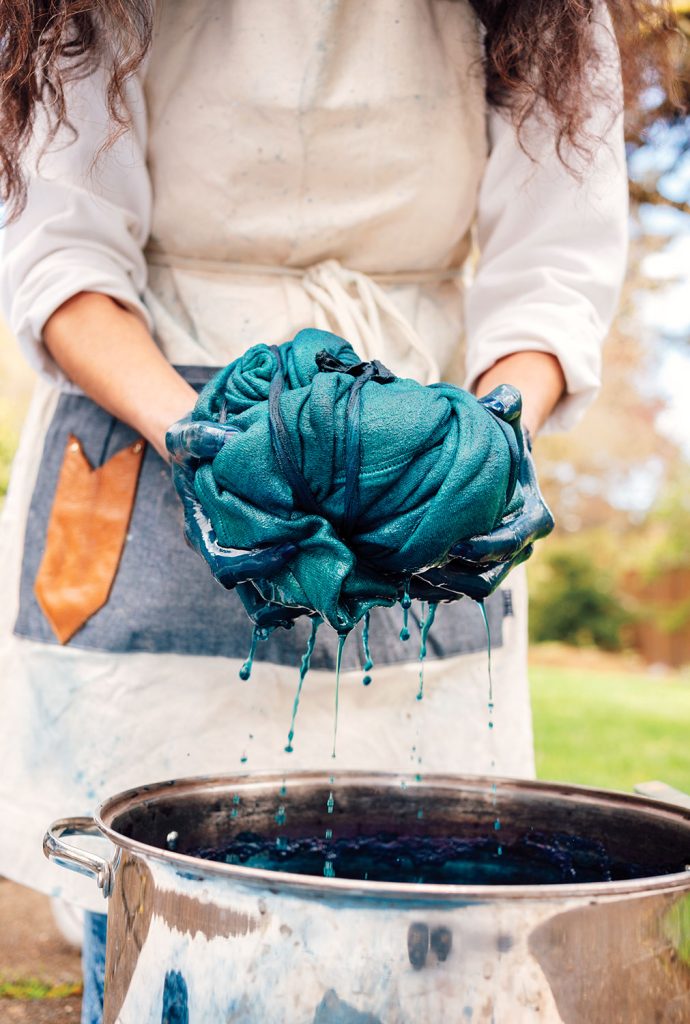
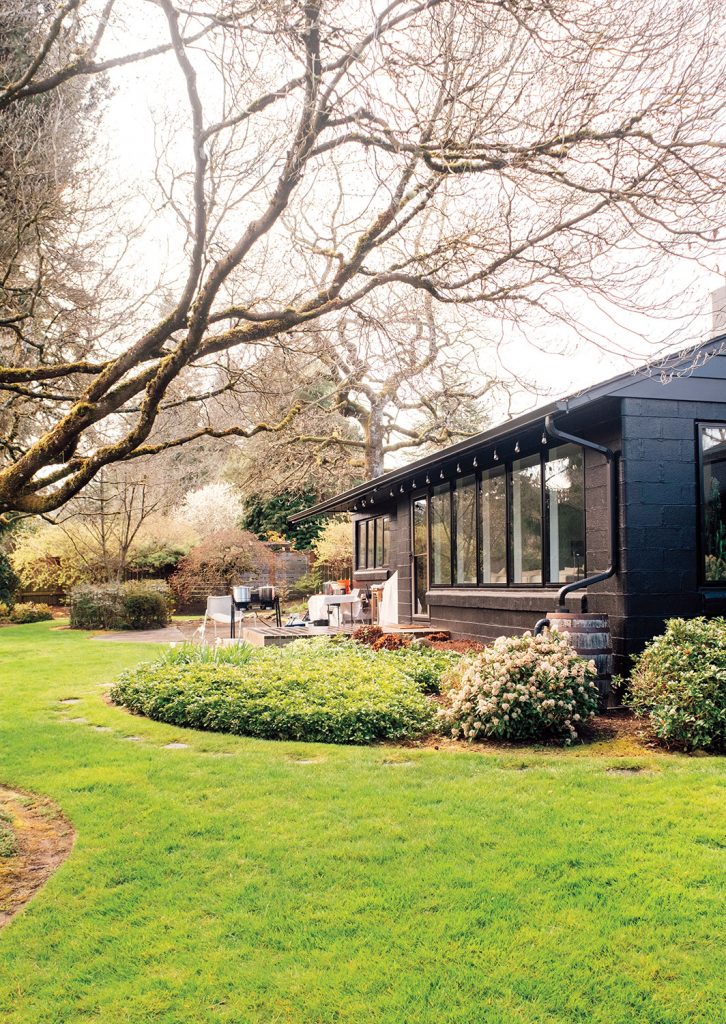
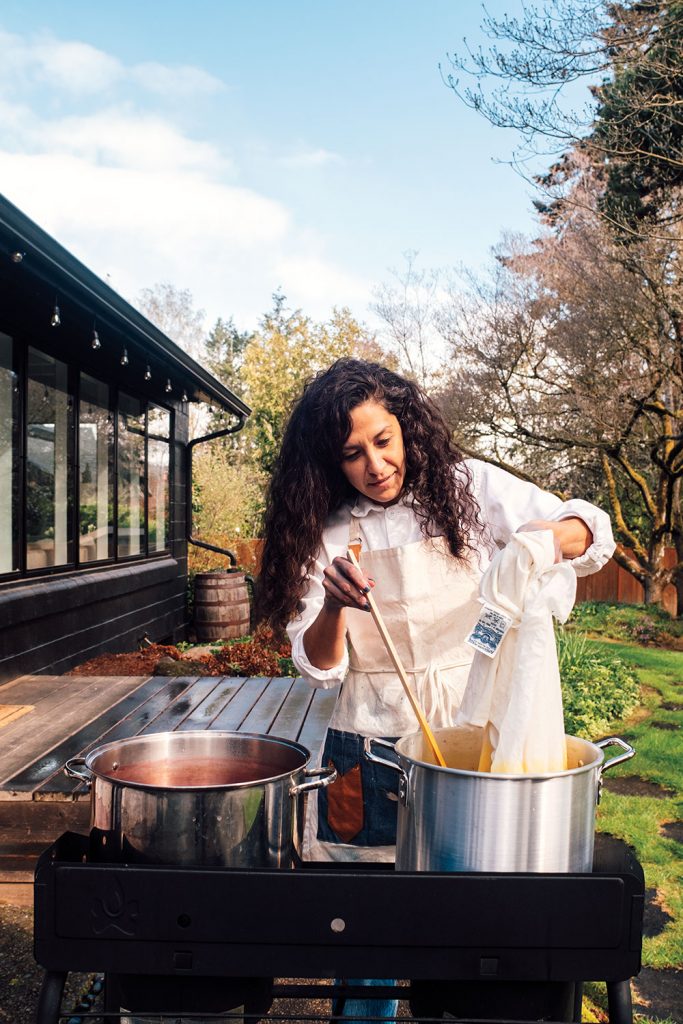
“I also like to partner and support local farms by harvesting from them. I’ve gathered walnut hulls from neighborhood trees, never taking more than I need, as other critters depend on these resources as well. I’ve had family and friends store their avocado pits and skins for me.”
Her enthusiasm for natural dyes comes first from her appreciation of the environment (which she refers to as a “love and deep respect for the natural world”) and her no-waste philosophy. Her focus on minimizing waste in her work and daily life was sparked further when she visited an exhibit at the Portland Japanese Garden. Called “Mottainai: The Fabric of Life, Lessons in Frugality from Traditional Japan,” the humble, yet exquisite, garments on display represented the Japanese art of not being wasteful, and it resonated with Adriana.
It also harkened back to her childhood. “Growing up in my Mexican household, we could not afford to waste anything,” she says. “The majority of my clothes were hand-me-downs from my older sister or cousins. We bought secondhand—and I still do today.”
Simply put, Adriana finds beauty in the things people tend to toss. For instance, the strings used to tie up fabric bundles live out a second life as hang tags. Drop cloths make perfect quilt backings, which she says, “are so lovely with all the natural dye spatters.”
Adriana believes that natural dyes are better than synthetic dyes. She loves the fact that the slight variations in color from dye bath to dye bath adds to the bespoke quality of each piece. And she stresses the importance of education on this topic. “There are lots of articles about the toxicity of synthetic dyes,” she says. “It’s so complex, and I encourage people to do their own research.”
She also warns that when it comes to dyes, “natural” doesn’t necessarily always mean safe. All of the natural dyes she works with are nontoxic, but some people might have allergies or sensitivities to certain plants. “Choose your plants wisely,” Adriana advises. “Always properly identify the plants you are working with before experimenting. Folks just need to do their own research on what plants to use.”
With her laid-back, humble approach, it’s clear that Adriana’s creative process is just as natural and unpretentious as the very ingredients she uses. Frequently experimenting and trying new techniques, Adriana continues to believe that she’s not an expert—even though she’s had nearly a decade of natural dyeing experience.
Looking out toward a future brimming with organic, vibrant colors, she says, “I’m still learning so much and the possibilities are endless.”
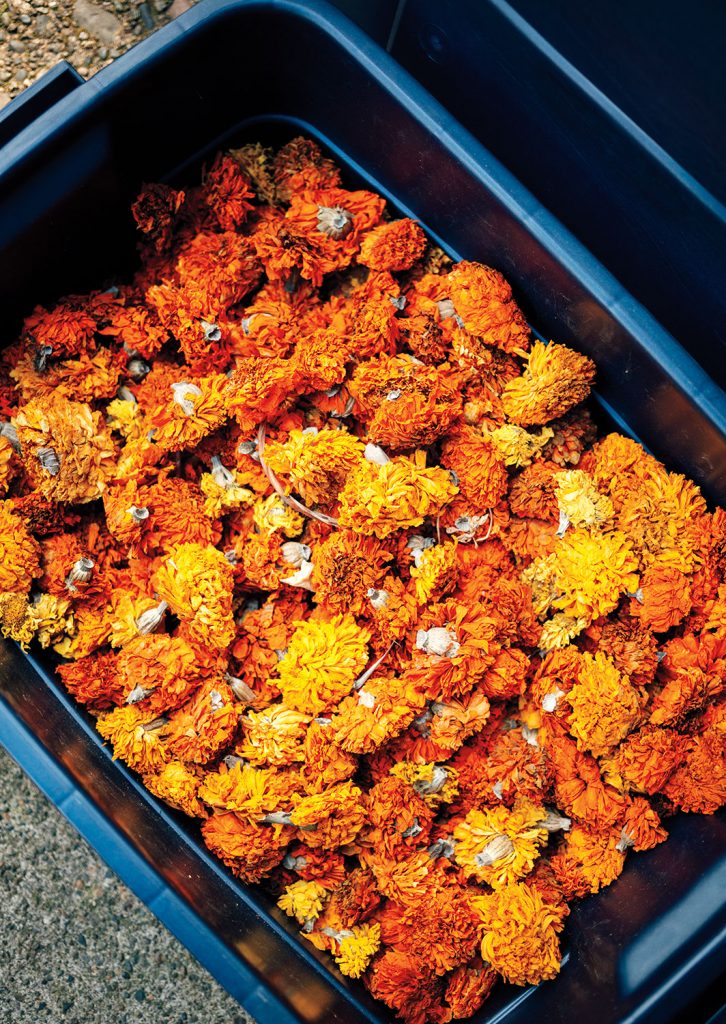
Bright Bundles
While Adriana’s creations certainly look beautifully intricate, you can capture some of that magic by crafting your own DIY dyes. Whether you’re creating a stunning tea towel or a one-of-a-kind shirt, you can achieve the naturally-dyed look with Adriana’s how-to. Her top piece of advice? Experiment and have fun!
Gather
Organic linen, cotton, or hemp fabric
White vinegar
Water
Large pot
Twine
Bamboo steamer
An assortment of plants and vegetables to use as natural dyestuff. These can include:
Dried flowers
Onion skins
Turmeric
Black beans
Black tea
Foraged plant material from your yard
Leaves
Eucalyptus
Marigolds
Dahlias
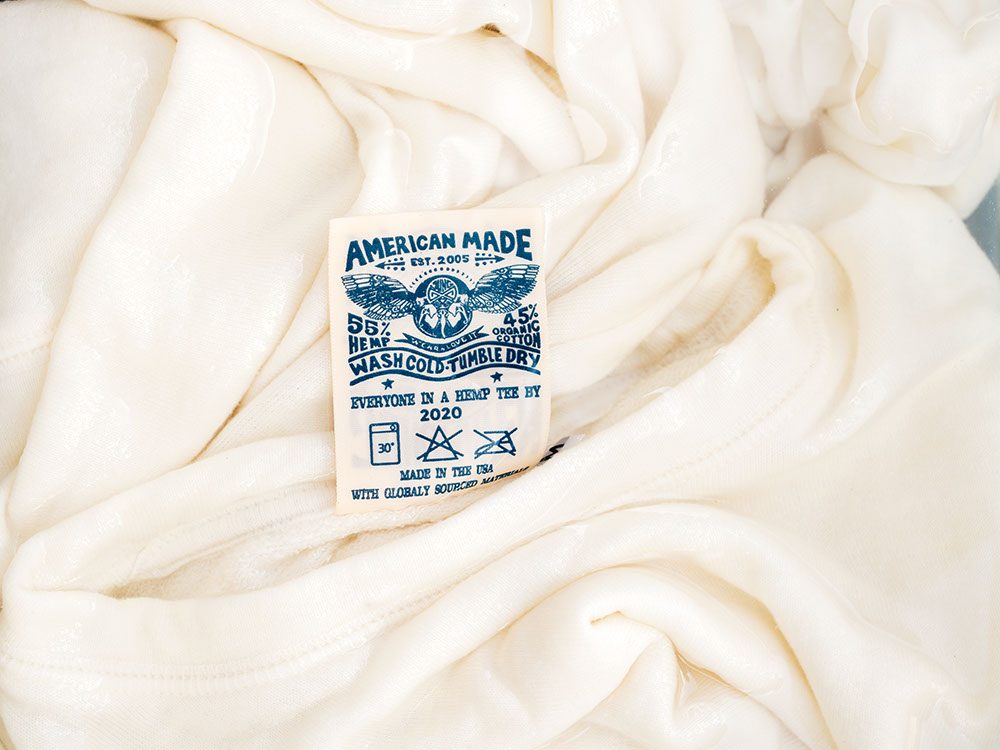
1
Starting with organic linen, cotton, hemp, or any natural fabric you have available, first use white vinegar as a fixative—one part vinegar to four parts water. Place fabric in the vinegar/water solution and simmer for about an hour. Wring out fabric from the vinegar/water solution. Lay flat.
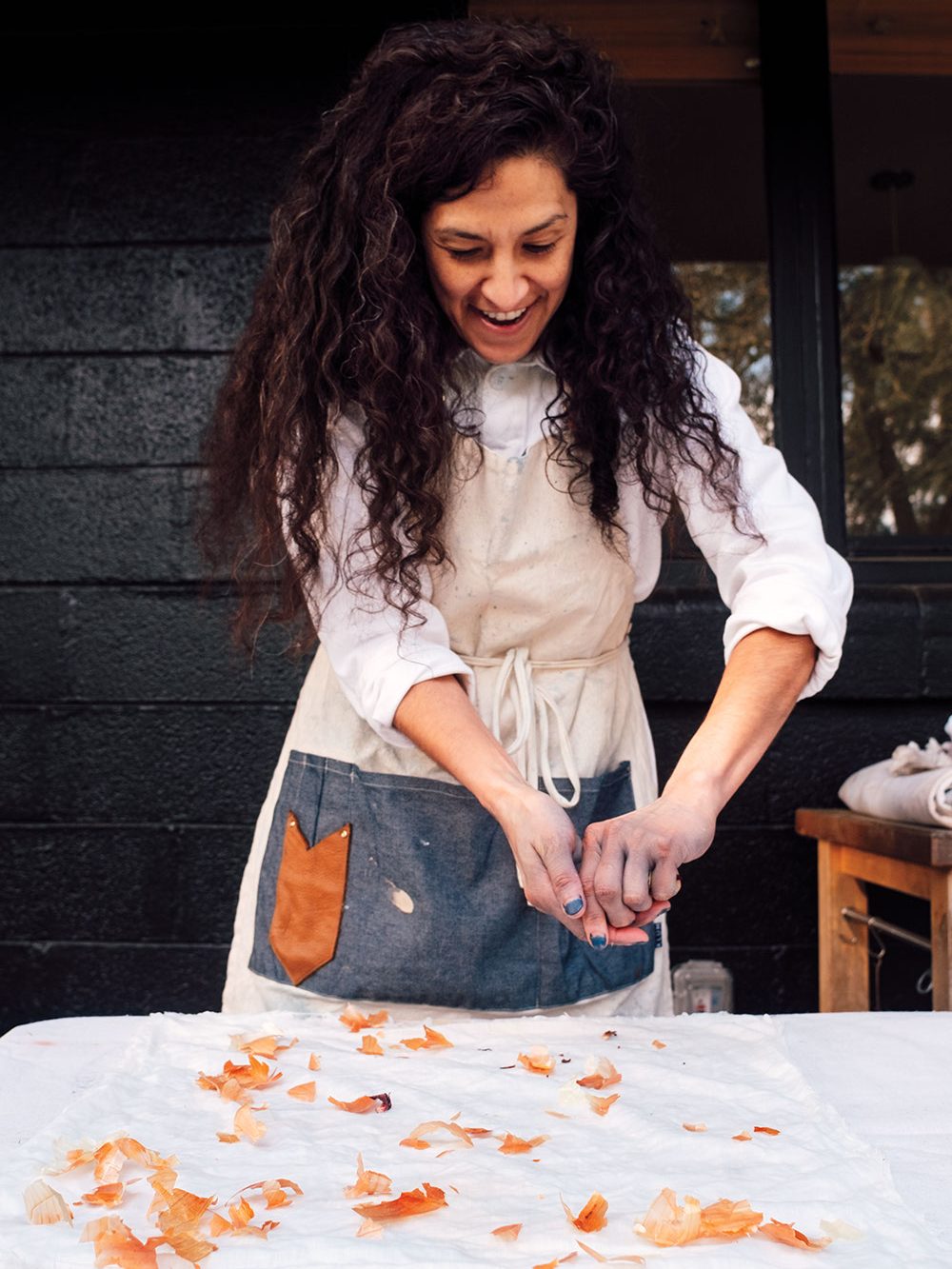
2Starting with organic linen, cotton, hemp, or any natural fabric you have available, first use white vinegar as a fixative—one part vinegar to four parts water. Place fabric in the vinegar/water solution and simmer for about an hour. Wring out fabric from the vinegar/water solution. Lay flat.
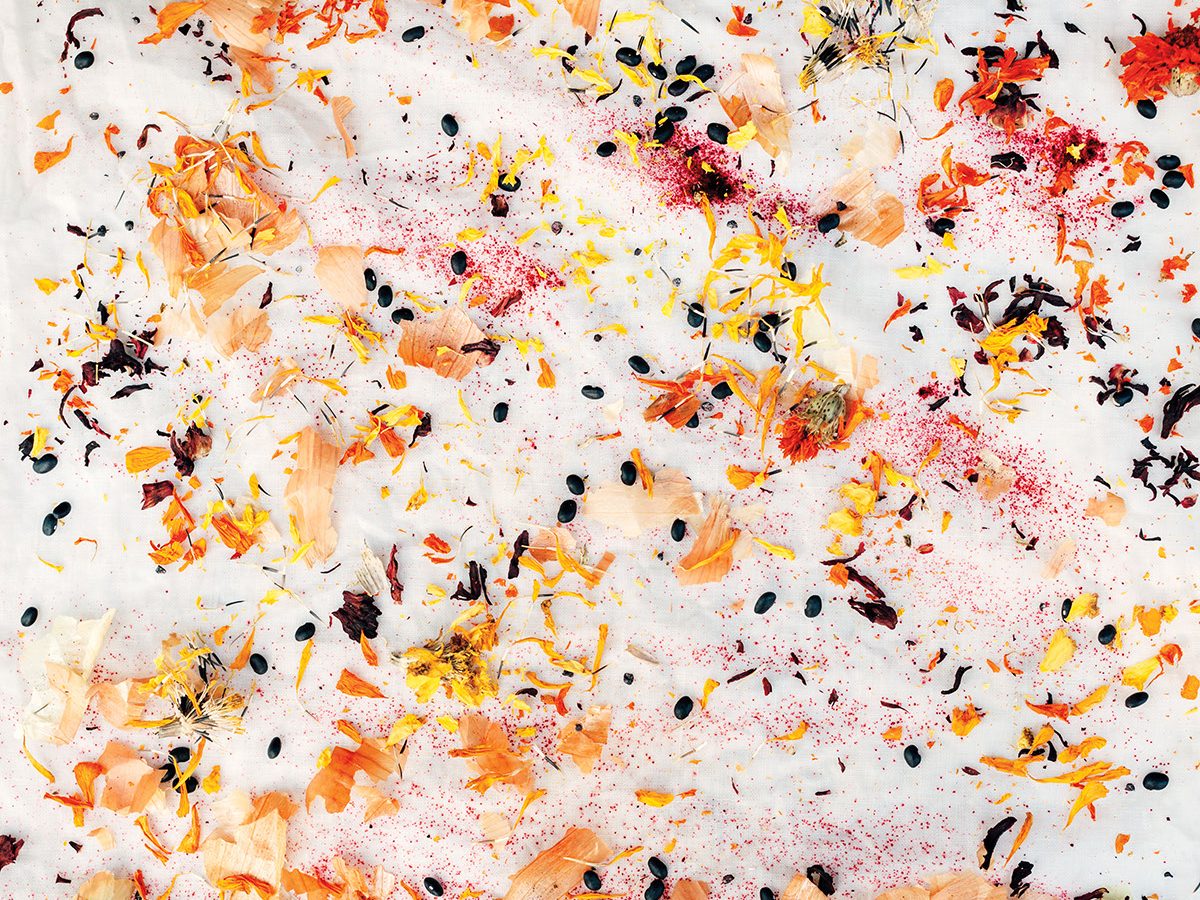

3Starting with organic linen, cotton, hemp, or any natural fabric you have available, first use white vinegar as a fixative—one part vinegar to four parts water. Place fabric in the vinegar/water solution and simmer for about an hour. Wring out fabric from the vinegar/water solution. Lay flat.
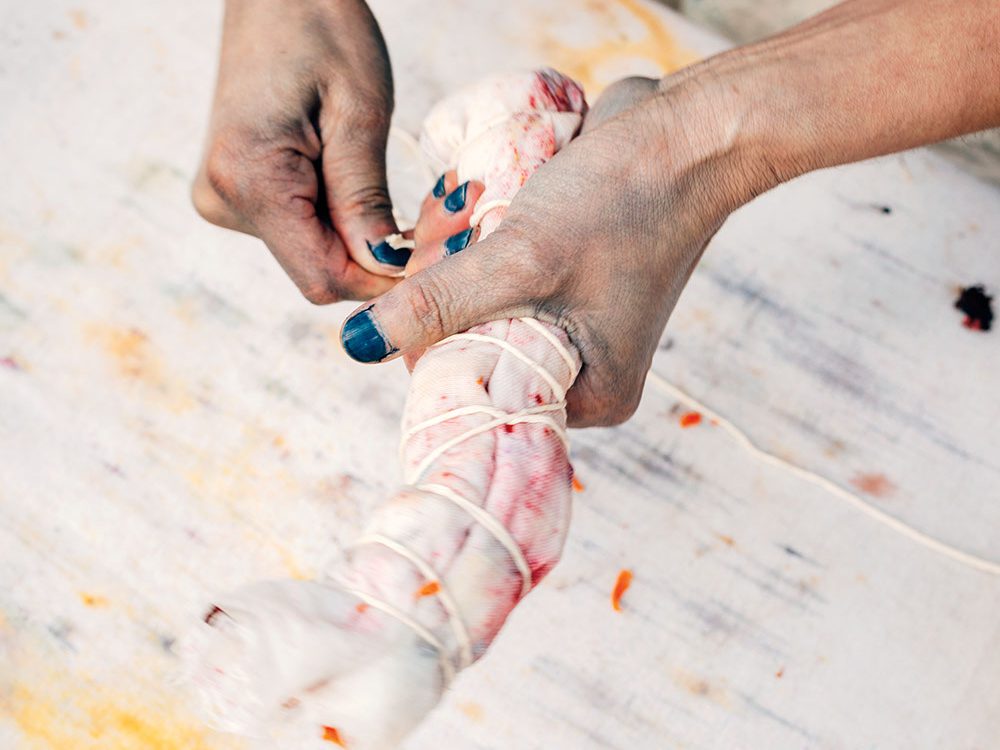
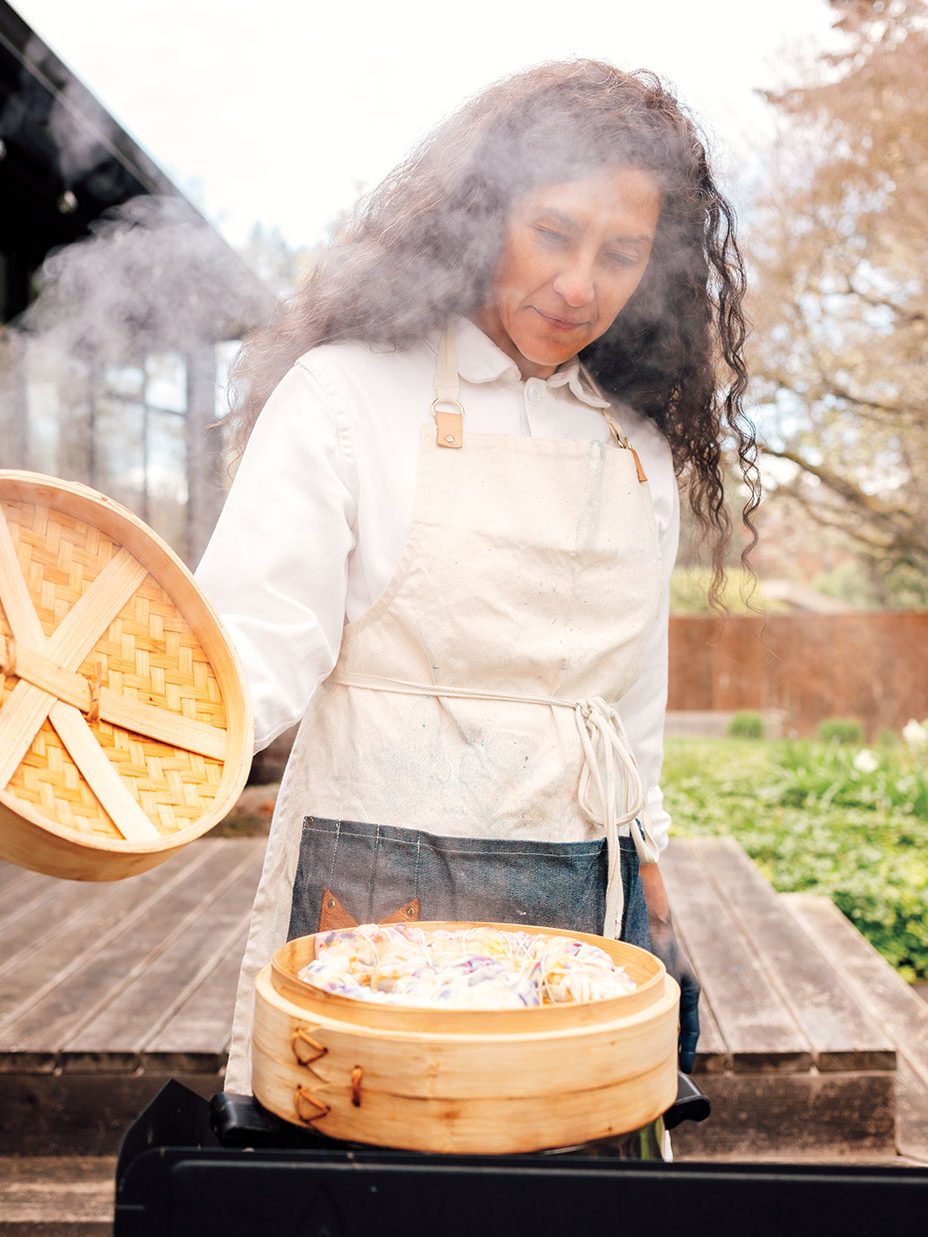
4 Starting with organic linen, cotton, hemp, or any natural fabric you have available, first use white vinegar as a fixative—one part vinegar to four parts water. Place fabric in the vinegar/water solution and simmer for about an hour. Wring out fabric from the vinegar/water solution. Lay flat.
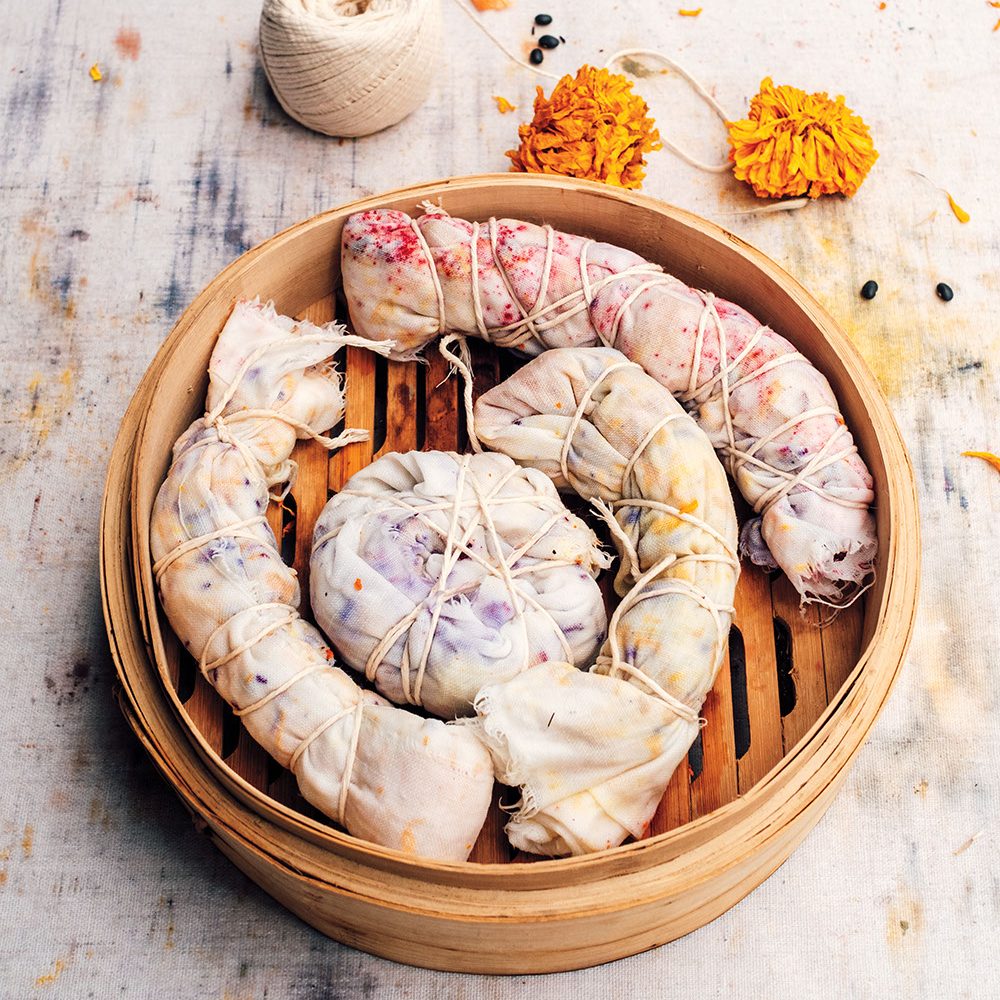
5 Starting with organic linen, cotton, hemp, or any natural fabric you have available, first use white vinegar as a fixative—one part vinegar to four parts water. Place fabric in the vinegar/water solution and simmer for about an hour. Wring out fabric from the vinegar/water solution. Lay flat.
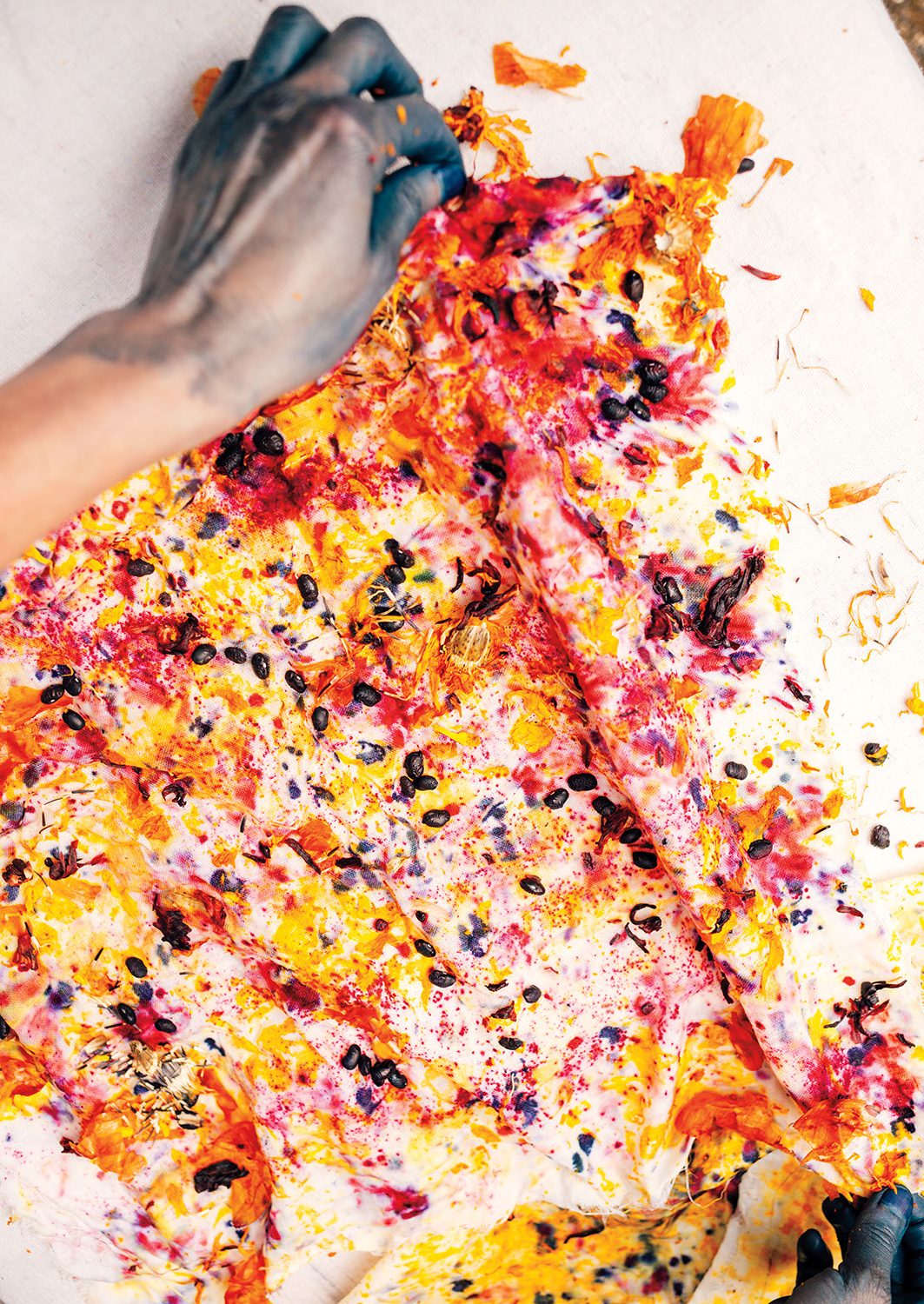
6 Starting with organic linen, cotton, hemp, or any natural fabric you have available, first use white vinegar as a fixative—one part vinegar to four parts water. Place fabric in the vinegar/water solution and simmer for about an hour. Wring out fabric from the vinegar/water solution. Lay flat
7 Starting with organic linen, cotton, hemp, or any natural fabric you have available, first use white vinegar as a fixative—one part vinegar to four parts water. Place fabric in the vinegar/water solution and simmer for about an hour. Wring out fabric from the vinegar/water solution. Lay flat.

